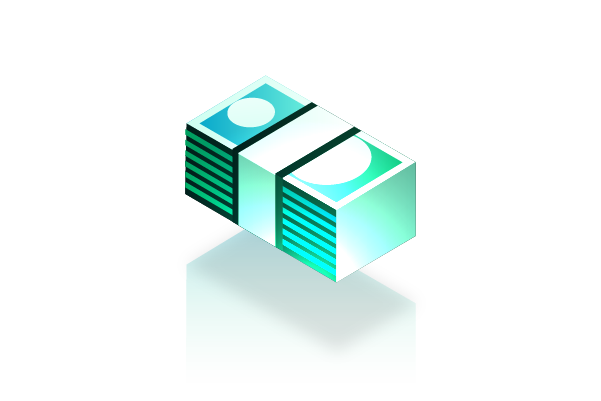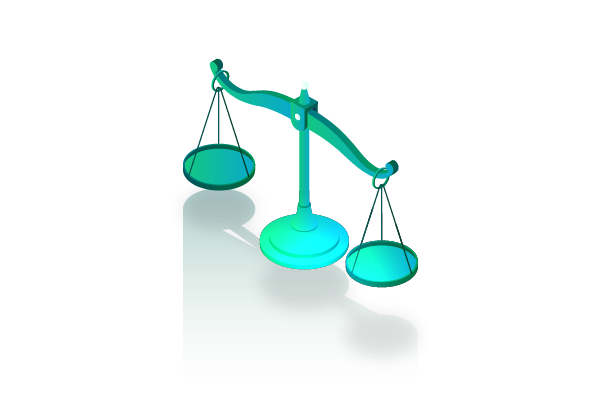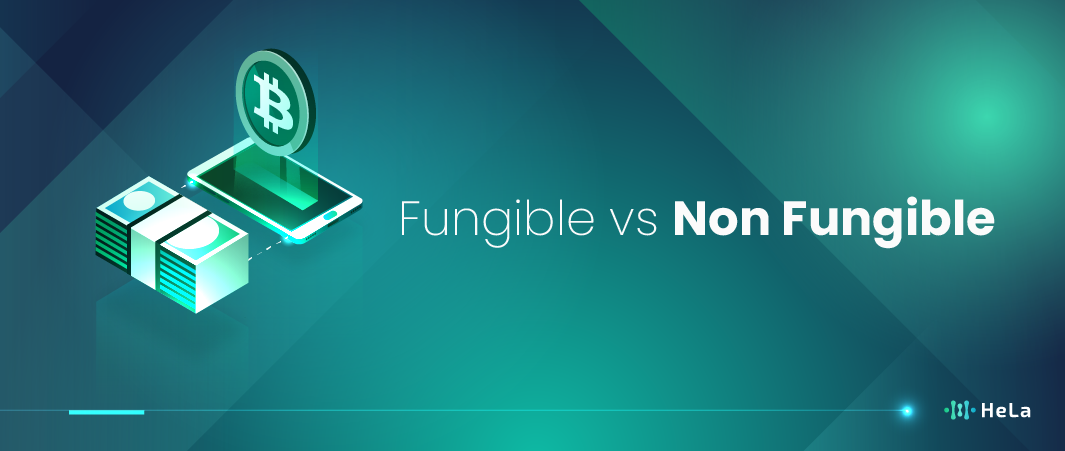Amidst the dynamics of finance and technology in this era, the notions of fungibility and non-fungibility, particularly in the digital assets’ domain, have been taken to the limelight. The line between fungible and non-fungible items is what stays in mind in the modern finance evolution and the exciting virtual world of the digital economy. Fungible assets, which represent traditional financial assets, possess the features of uniformity, interchangeability, that encourage them to act as intermediaries of exchange and mediums of value in the realm of global markets.
The main characteristics of fungible assets are seen in fiat currencies, and also represent liquidity, ease of transfers, seamless transactions and market efficiency. Inversely, the boundless possibilities of NFTs add a variance in the idea of value and ownership that celebrate one-of-a-kind and distinguishable elements of a digital asset. Recognizing the difference between these two concepts will be critical in handling the challenges of the complicated modern market. Let us discuss the variations and implications of fungible and non-fungible assets in the following paragraphs.
Fungible Assets: Interchangeable Units of Value

The concept of fungible assets is at the heart of any contemporary economic system, for they represent the abstraction for uniformity and equivalency of a number of different asset types. These assets, be they fiat money, precious metals or cryptocurrency, are all set apart by the fundamental property of full interchangeability with one another, without any associated loss in value.
Consider the ubiquitous example of fiat currencies like the US dollar: each dollar bill, whether the sequence number is known or not, is unquestionably valid and acts as an expedient medium of exchange in routine market dealings. Likewise, commodities such as gold, oil, and food products also possess fungibility, in that all units of these commoditized items adhere to a standard quality grade and are hence equivalent in value, thus allowing easy exchange on the global market.
As well, growth in digital currencies, especially cryptocurrencies such as Bitcoin and Ethereum, has created a new field of fungibility. In the world of decentralized finance (DeFi), these digital coins are particularly fungible, ensuring each individual unit of them is intrinsically equal to the rest of the whole supply in terms of properties and value with the same monetary intrinsic value. The fact that a single currency can exist as multiple units distributed across a peer-to-peer network is absolutely critical for the operation of blockchain-based networks, where transactions are transparently and immutably recorded on a distributed ledger, enhancing trust and reliability without relying on intermediaries.
Nevertheless, fungibility facilitates the payment process and improves market liquidity, but it also carries with it its own challenges and nuances. The fungibility of such assets, on the other hand, may be compromised by factors like contamination, adulteration, or degradation in quality, which can result in a disparity in value between similar units of such assets. On the other hand, the legal and regulatory frameworks may limit the fungibility of assets through sanctions laws that outlaw the trade of certain products or the seizure of assets in criminal investigations.
Also Read: Top 5 Layer 1 Crypto Projects Stand as Pillars of Innovation in 2023
Therefore, the fungibility principle closely relates to more general regulatory financial matters such as those related to taxation, risk management, and regulation. In the light of a financial institution, upholding the fungibility of assets should be at the forefront, as it is an essential element for the liquidity and stability of markets, since the interchangeability of assets may be disrupted at any moment, which can cause a significant disruption in access to capital and damage the confidence of investors. Therefore, banks and financial intermediaries utilize complicated risk management tools so as to avert the perils of non-fungibility that affect them, such as credit default swaps, hedging derivatives, and collateralized debt obligations.
In essence, fungible assets form the bedrock of economics and finance, where assets and commodities can be substituted, ensuring the efficient allocation of resources and the proper functioning of global markets. Although the universal applicability and swappability of fungible assets serve as the fundamental anchors for the current financial system, innovation and prosperity in the global economy are driven by these values.
Non-Fungible Assets: Unique and Singular

Though vital in monetary markets, functional units are the most uniform, interchangeable assets that can be substituted by one another because every unit has the same value and the same properties as any other unit of that asset. This serves as the essence of all financial transactions, which include currencies, commodities, and cryptocurrencies.
One example of the feature of fungibility is fiat money, for instance, the US dollar, which makes every single dollar bill interchangeable with any other without reducing the value of each one. Likewise, goods like gold and oil also retain fungibility since every unit carries the same intrinsic value as any other unit of the same grade, irrespective of its source. Cryptocurrencies like Bitcoin and Ethereum follow fungibility principles, and each digital token can be exchanged with another of its kind.
Conversely, non-fungible items are indivisible and unique in contrast to their counterparts. Every unit of this type has its own unique characteristics, which separate them from units of the same class. The most vivid example of non-fungible tokens (NFT) is NFT, or blockchain-based goods, which have become extremely popular lately. NFT is a digital token that stands for Non Fungible Token and symbolically represents the ownership of unique items or assets, ranging from digital art and collectibles to virtual real estate and physical assets.
What sets NFTs apart is the fact that they cannot be split or duplicated, and each NFT is a unique copy of the original. As opposed to Fungible Assets, every NFT has some characteristic attributes that help to make it very unique. This differentiated feature is being hashed and saved on the blockchain, which guarantees true ownership and the perfect authenticity of the product.
The emergence of NFTs has provided a new pathway that both creators and collectors could leverage to advance the way digital assets are traded, bought and sold. The significance of non-fungibility is not just limited to the digital sphere; the concept also pervades the real world, including physical assets like real estate, unique collectibles, and intellectual property, because these assets are valued due to their uniqueness and exclusivity. Although fungible assets provide liquidity and efficiency as they serve in financial markets, non-fungible assets have irreplaceable ownership and value propositions, and they can fit into niche markets and diverse consumer interests as well.
The digital space has offered artists a new opportunity to earn revenue from their work and to build up a loyal following. Artists can maintain ownership rights and earn royalties from NFT secondary transactions through the use of NFTs as a payment method, which implies long term income generation for them. Furthermore, NFT marketplaces have brought about a democratization of access to digital art, enabling new artists to display their skills on a global stage and gain the limelight.
Nevertheless, the fast development of the NFT market has pushed for discussions over sustainability, copyright violations, and market speculation. The energy-consuming nature of blockchain technology, which is used for mining, and trading NFTs, has led to criticisms about its environmental impact, which motivates developers and researchers to apply more environmentally friendly solutions. Moreover, an unchecked NFT market requires a guarantee of artists’ copyrights and protection from forgery, which endangers both artists and collectors at the same time. With the evolution of the NFT market, regulatory infrastructure industry standards will be key factors in ensuring transparency, consumer protection and the term stability of the market.
Fungible vs. Non-Fungible Tokens (NFTs)

Fungible and non-fungible tokens (NFTs) while being two different categories of digital assets, have their own individual features and applicability.
Fungible Tokens
Fungible tokens, which signify a range of defining features that classify them as an essential component of the digital finance ecosystem, are also known to comprise an extensive number of features that separate them from cryptocurrencies and blockchain technologies. The second important property is that of consistency and equality, as each token is the same in a system, thus enabling flawless transactions and giving rise to a belief in value. The aspect of fungibility signifies the nature of the fungible token itself, which serves as a standard basis for payment and valuation.
Fungible tokens work not just because of their interchangeability but also because of their divisibility and liquidity, which make them widely useful and used. It is their trait of division that leads to fractional ownership and microtransactions, which make cryptocurrency markets more liquid and ease transactions by thinning them. Both when they are used in everyday transactions like 0.5 Bitcoin or as a microtransaction inside a decentralized application, the divisibility of fungible assets provides proof of their usefulness and practicality within digital money.
Furthermore, fungible tokens perform four different functions as intra-digital currencies, payment mediums, and stores of value in digital ecosystems. These can be used by the users to pay for goods and services, remittances and investments, benefiting from the liquidity and ease of transfer. Similarly, fungible tokens are interchangeable with inflationary fiat currencies and commodities and thus act as a hedge to inflation and an avenue for speculative investments. Such duality further reflects the multi-directional nature of fungible tokens that underlies their suitability for a broad range of financial applications, thus making them a primary constituent of the digital financial paradigm.
Moreover, one must recognize fungible tokens as the motivating force in the ecosystem of smart contract platforms like Ethereum, where they are used for programmable transactions and as the basis of decentralized applications (DApps). In the thriving territory of Decentralized Finance (DeFi), fungible tokens act as the pillars for numerous financial services, such as lending, borrowing, staking and liquidity provision. Through their programmability, they can automate financial dealings, thus causing a decrease in costs and contributing to the efficiency of decentralized financial systems. Hence, fungible assets are the cornerstone of the fundamental decentralized finance revolution, which is the mainstay of digital finance evolution.
Similarly, such tokens tend to possess cross-chain and interoperability compatibility, making them easily transferable within various blockchain networks. This decentralization not only expands their applicability but also enhances their liquidity and accessibility for use within different crypto ecosystems. Interoperability may be seen in the transfer of stablecoins across multiple blockchains and the integration of fungible tokens into decentralized applications on different ecosystems or platforms, all of which stress the ability of cryptocurrency fungible tokens to adapt and be resilient in the larger cryptocurrency context.
In such a way, non-fungible tokens in their essence comprise the foundation of digital finance, being symbolic of the range of properties they have, which serve to emphasize their importance and use within the later-day crypto market and blockchain technology. They are the gateway to innovation, efficiency, and accessibility in the rapidly changing financial space and even serve as the foundation on which everything else stands, because of their fungibility, which shows itself in the fact that they can be substituted or divided and in the role they play as a medium of exchange and store of value.
Non-Fungible Tokens (NFTs)
NFTs, which are short for Non-Fungible Tokens, have come into the limelight in the virtual arena, born out of several differentiating features that set them apart from the fungible ones. At the heart of NFTs is their non-fungible feature, which differentiates one NFT from other NFTs since each of them represents a unique ownership of a particular digital or physical commodity. This distinction, however, contributes to the fact that an NFT provides an unrivaled level of exclusivity and value to every single NFT by making each of them stand on their own. Different from the fungible tokens that are divisible into the same parts and feature any fraction of the token as an identical unit, NFT is indivisible in nature, highlighting the irreplaceability of the standalone units.
Besides, the NFT value proposition is complex in the sense of scarcity and rarity concepts. The deficiency of NFTs, in most cases, emanates due to the few NFTs’ issuance or their special features, which is a major driving factor in the market value. Collectors and enthusiasts, in their pursuit of NFTs representing rare or unique assets, are fueling the demand and thus giving elevated values to the asset. Besides, the circulation scarcity model could generate interest and make it exclusive, thus making it even more intriguing for NFT holders.
Also Read: Top 10 Fastest Blockchain Platforms in 2024
In addition to this, NFTs are unique as they ensure unrivaled levels of transparency and authenticity, which are facilitated through their issuance and validation on blockchain networks. Each NFT is carefully minted and then recorded on the blockchain, and this process provides indisputable proof of possession as well as a seamless, transparent record of transactions. They make sure of the integrity and originality of digital assets, addressing worries about the possibility of counterfeiting or unauthorized duplication. The two key benefits of blockchain technology in terms of trust and transparency are the linkages that give rise to confidence in the ownership of NFTs, and they also form a strong basis for the digital assets’ value proposition as legitimate and verifiable.
With technological infrastructure as a prerequisite, NFTs have also triggered innovations and disruptions in other areas. NFTs have triggered the creation of many web3 applications, which include art, gaming, entertainment, fashion and beyond. This brings out novel opportunities for the user, collectors and brands. Artists can do that by tokenizing digital creations, which would support direct control and money making opportunities for their art.
Traditionally, gamers trade virtual assets in the game space, which is a catalyst for thriving economies and gaming communities. Marketers use NFTs for digital collectibles and transformational marketing experiences, which entail building stronger customer-brand relations. The multiple sectors that are impacted and the numerous ways in which NFTs can be applied demonstrate their transformational power in the digital age, whereby the traditional models of ownership, distribution, and engagement are reimagined.
To summarize, Non-Fungible Tokens exemplify a new principle of ownership in digital assets associated with their uniqueness, scarcity, transparency, and variety. With their increasing prominence and future modifications, NFTs may change the way we feel, develop, and communicate with digital assets, thereby opening new frontiers in innovation, creativity, and value creation in the digital economy.
Conclusion
Non-fungible tokens (NFTs) have become an innovative use of blockchain technology, transforming the way we transact, create, and relate to unique, non-interchangeable digital objects. By being digital or physical assets and then tokenizing them, NFTs enable a proof of ownership and authenticity to be recorded on a blockchain, thus countering problems of counterfeit or unauthorized duplication. As a result of the transparency and trust that come with NFTs, a model shift has occurred in many areas, giving creators, collectors, and investors leeway to explore previously uncharted creative routes, monetization methods, and engagement strategies.
Emerging as a combination of these several distinctive asset classes, they dictate economic, business and cultural patterns of expression in a virtual environment. Fungible assets are the guarantee of liquidity and stability, which are crucial for a normal market operation, while non-fungible assets bring to the digital ecosystem originality, authenticity and exclusivity, thus offering new ground for property, investment and deterrence. Amidst the dynamic evolution of this kind of landscape, the synergistic relationship between fungible and non-fungible assets will change the paradigms of our traditional thinking, share values equally across the world, and lead us to prosperity and new digital innovations.
Disclaimer: The information provided by HeLa Labs in this article is intended for general informational purposes and does not reflect the company’s opinion. It is not intended as investment advice or a recommendation. Readers are strongly advised to conduct their own thorough research and consult with a qualified financial advisor before making any financial decisions.

